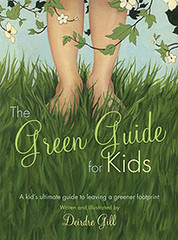
Those balls of dust living under your bed aren't just unsightly, they can be toxic, too! Chemicals from around your home and from the outdoors wind up in your indoor dust when they resettle from home products and come in our your shoes and through windows and doors. Dust is made up of all sorts of yucky stuff, like human hair and skin, pet dander, fungal spores, tiny particles and fibers. To make those dust bunnies even grosser, studies have found that 66 different endocrine disrupting compounds have been found in house dust. The worst among these are fire retardants, phthalates, and home use pesticides. EEK!!! Sounds pretty awful right? They are indeed--when you are exposed to toxic chemicals, even low doses, your health can be compromised. This is especially of concern for small children, who often play on the floor and put objects in their mouths. Small amounts of PBDE's (fire retardant) can cause damage to the reproductive system, deficits in motor skills, learning, memory and hearing as well as behavioral changes.
So where do these toxic chemicals come from and how do the end up in a dust ball under your furniture? Products such as furniture, electronics, shoes, plastics, fabrics and food shed chemicals over time. Outdoor pollutants travel inside on your shoes or through a cracked window.
What you can do:
-Vacuum regularly with a vacuum that has a HEPA filter to trap small particles. Don't forget to vacuum upholstered furniture and under those couch cushions!
-Wet mop uncarpeted floors regularly.
-Buy wooden furniture or furniture filled with cotton, down, wool or polyester as it is less likely to contain PBDE's.
-Wipe furniture with a microfiber cloth or a wet cotton cloth to get those tiny particles. Skip the sprays and wipes, they only add more chemicals to your home.
-Keep electronic equipment dust free by wiping with a damp cloth.
-Change the filters frequently on your forced air heating or cooling system.
For more information on toxic dust and how to protect yourself and your family from other toxins, visit the Environmental Working Group website.










2 comments:
This is a great article! With your permission I would like to post it on my green blog to share with my readers.
www.brightlygreen.blogspot.com
Thanks!Sharron www.brightlygreen.biz
Sure Sharron, just be sure to give credit and a link back.
Post a Comment